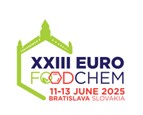Vedecký časopis - archív
Journal of Food and Nutrition Research
Súhrny čísla 1 / 2013
VELJKOVIĆ, J. N. – PAVLOVIĆ, A. N. – MITIĆ, S. S. – TOŠIĆ, S. B. – STOJANOVIĆ, G. S. – KALIČANIN, B. M. – STANKOVIĆ, D. M. – STOJKOVIĆ, M. B. – MITIĆ, M. N. – BRCANOVIĆ, J. M.
Evaluation of individual phenolic compounds and antioxidant properties of black, green, herbal and fruit tea infusions consumed in Serbia: spectrophotometrical and electrochemical approaches
Journal of Food and Nutrition Research, 52, 2013, č. 1, s. 12-24
Aleksandra N. Pavlović, Department of Chemistry, Faculty of Sciences and Mathematics, University of Niš, Višegradska 33, P. O. Box 224, 18000 Niš, Serbia. E-mail: aleksandra.pavlovic@pmf.edu.rs, tel.: +381 18 533-015, fax: +381 18 533-014
Súhrn: The aim of this study was evaluation of individual phenolic compounds and antioxidant activity of commercially consumed black, green, fruit and herbal tea infusions in Serbia in order to characterize the quantity and quality of teas. The most abundant compound was gallic acid, followed by caffeic acid, rutin, (+)-catechin and (–)-epicatechin. The main procyanidin was procyanidin B1. The antioxidant activity was measured using five in vitro methods: determination of 1,1-diphenyl-2-picrylhydrazyl radical-scavenging activity (DPPH), 2,2’-azino-bis(3-ethylbenzthiazoline-6-sulphonic acid) radical cation-scavenging activity (ABTS), ferric reducing antioxidant power (FRAP), reduction power (RP) Fe(III) to Fe(II) and cyclic voltammetry (CV). Obtained results of FRAP and of the Fe(III)/Fe(III) method correlated strongly with the total phenolics content (R2 = 0.92246, R2 = 0.88084, p < 0.0001). Antioxidant power of green tea and bearberry tea was considerably higher than that of black tea. Raspberry and cherry showed the highest antioxidant power among fruit tea infusions. Contribution of phenolic compounds to tea antioxidant activity was also quantified in this study. Stepwise linear regression demonstrated that quantification of different phenolic compounds responsible for tea antioxidant activity was dependent on the method used. Gallic acid, caffeic acid (+)-catechin, (–)-epicatechin, (–)-epigallocatechin, procyanidin B1, procyanidin B2 together made up 43.6–99.9% of the antioxidant activity of tea.
Kľúčové slová: tea infusions; phenolic compounds; antioxidant activity; cyclic voltammetry; HPLC; stepwise linear regression
Na stiahnutie:
jfnr20131p_1.pdf (PDF, 140.31 Kb, 4592x)










